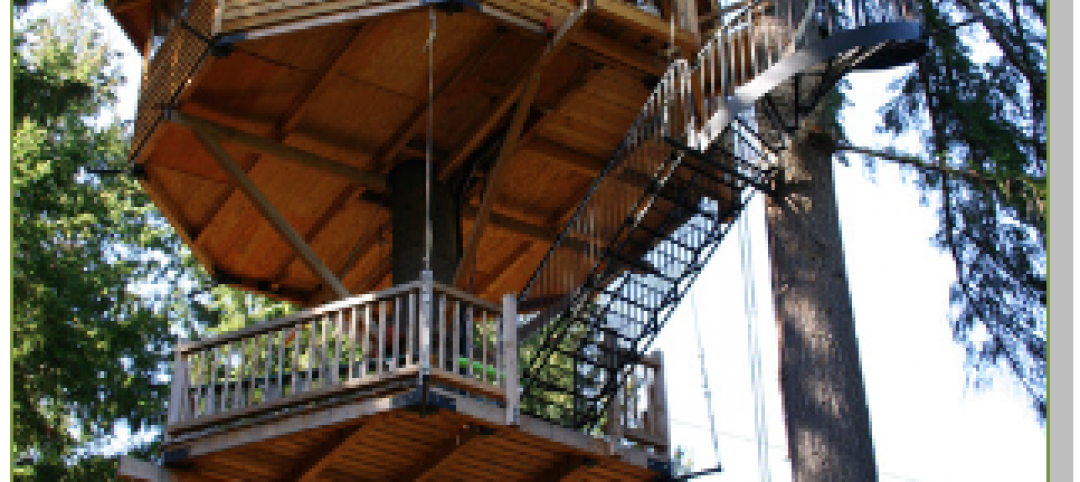Skipping Stone, Schneider Electric and Lawrence Berkeley National Laboratory announced today the formation of a committee tasked with enhancing the current Demand Response LEED Pilot Credit. The team, led by Skipping Stone and composed of Schneider Electric and the Demand Response Research Center (DRRC) at Lawrence Berkeley National Laboratory, will collaborate on enhancing the credit to enable commercial building owners and LEED green building projects to earn credits in LEED for enrolling in utility or wholesale market demand response programs.
The enhanced program will provide LEED projects with demand response definitions, participation options for buildings, and implementation and documentation requirement guidelines. The team will also develop a robust market research agenda to study participation across markets, adoption criteria, load reduction scenarios, utility service territory benchmarking and implementation technology drivers. To assist buildings in identifying existing demand response programs, Skipping Stone will provide U.S. Green Building Council (USGBC) members with a searchable national database of programs.
“Demand response is unique in comparison to other LEED credits as it requires coordination with the utility and wholesale markets,” said Brendan Owens, Vice President, LEED Technical Development, USGBC. “By bringing this team of experts from the energy and building communities together, USGBC will benefit from the combined expertise.”
“Demand response is a new path for USGBC and critical to the building communities’ involvement in the smart grid,” indicated Mark MacCracken, USGBC Chairman.
“One of our key strategic initiatives focuses on taking buildings into the energy markets through demand response initiatives,” said Jim Anderson, Vice President, USA Utility and Smart Grid Business for Schneider Electric. “Being asked to assist USGBC by providing our proven building and implementation perspective is an honor in this groundbreaking endeavor.”
The revised Demand Response LEED Pilot Credit will be published later this spring. Based on feedback from participating buildings, the market research generated in the market pilots and input from pilot sponsors, recommendations will be made for eventual integration of the Demand Response Credit into the Energy & Atmosphere Credits in the next version of the LEED rating system, LEED 2012.
To propel building community adoption of both demand response and the revised LEED credit, USGBC will be launching a series of utility service territory market pilots. Skipping Stone has been named as the market pilot manager and is currently developing stakeholder support with potential host utilities, market operators, regulators, enabling technology and services providers and other interested parties.
“This USGBC initiative is a game changer for the adoption of demand response by the commercial building sector,” said Peter Weigand, Skipping Stone Chairman and CEO. “We hope that the energy community gets behind these market pilots because this it is a great opportunity to help drive commercial sector adoption of load management programs.”
Related Stories
| Sep 12, 2011
Living Buildings: Are AEC Firms up to the Challenge?
Modular Architecture > You’ve done a LEED Gold or two, maybe even a LEED Platinum. But are you and your firm ready to take on the Living Building Challenge? Think twice before you say yes.
| Sep 12, 2011
Putting a stamp on USPS's first green roof
The Morgan Building roof totals 150,000-sf. In addition to a vegetated green roof, other roof areas were upgraded and included 55,000-sf of reflective concrete pavers and ballast, which were also placed over a Sarnafil waterproofing membrane, and 40,000-sf of EnergySmart Roof—a reflective, energy-efficient vinyl roofing system from Sika Sarnafil.
| Jul 22, 2011
High-performance windows and doors
Learning objectives After reading this article, you should be able to: Understand issues of thermal performance and energy efficiency in relation to window and door systems; describe optimal detailing of the window-wall interface and how it contributes to building performance, sustainability, and occupant well-being; understand how durability contributes to sustainable windows/doors; and list sustainable O&M requirements for window and door systems.
| Jun 30, 2011
Balancing cost and energy performance in net-zero buildings
BD+C Editorial Director Robert Cassidy talks with The Weidt Group's David Eijadi, FAIA, about the cost of producing net-zero buildings.















